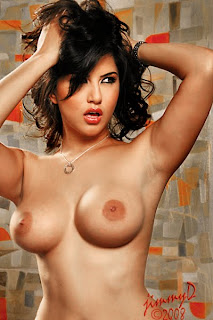 To my eye and mind, artsy does not equal art. Artsy can be good, really good, but it still ain't automatically art, true art.
To my eye and mind, artsy does not equal art. Artsy can be good, really good, but it still ain't automatically art, true art.I see plenty of work that is artsy, artistic even, but it's not necessarily what many view as art; not true art. I'm amongst the ranks of those many. (BTW, artistic, for me, is a step up from artsy yet still not true art.)
There are traditional conventions associated with art. Art, make that artists, can choose to break or ignore those conventions, use and abide by them, or do something in between. Either way, the results might be art, might simply be artsy or artistic, or might be something else. It's like porn from the perspective of the U.S. Supreme Court: "I know it when I see it." That, of course, doesn't make porn art. (By association.) It only means that defining art and defining porn are two separate entities that are similar in terms of subjectivity.
This might all seem confusing. Or, maybe not?
For me, for the most part, it's not.
In the world of truly great art--you know, stuff that hangs in museums or sells at auctions or galleries for big bucks--there are probably as many examples of great art that abide by the conventions as there are those that break them. Art is funny that way.
When it comes to photographic art, all of the same holds true. Photographers, it seems, often prefer the word "rules" over "conventions," i.e., breaking or obeying the rules. Either works.
In my opinion, throwing artistic conventions at one's photography does not make one an artist. It might mean the photographer has an artsy eye or artistic sensibilities but it doesn't mean the resulting work qualifies as true art, make that 'perceived by others as true art.' But it might also mean the work is noticeably better than a lot of other work... or not.
Regardless of whether those artsy elements in a photograph work or don't work, they are usually visible in the results and you, at least, get an "A" for effort.
Same holds true for breaking the rules, when they're broken effectively and on purpose.
Unfortunately, some of this art stuff allows photographers a convenient wild card to play when
The "art card" is, in theory, a beautiful thing. So is looking at the world through rose-colored glasses. The "art card" is most often played when viewers don't seem to appreciate a photographer's work or efforts. In the minds of shooters who play the "art card," it's a wild card that, for the most part and only in those art-card-players' minds, trumps all other opinions.
Fictional example:
"Dude. That photo sucks."
"That's your opinion. (Asshole.) Just because, it's out of focus, over-exposed, over-processed, composed like shit, and says nothing to you doesn't mean it sucks. It's my artistic expression and who are you to say what is art and what isn't?"
Okay.
I suppose.
That's not to say, of course, there aren't examples of actual art that are out of focus, over exposed, and all those other things. There are. (Although not too many.) It's just that, for the most part, most mere-mortal-shooters aren't producing work that bears those characteristics and still qualifies as art. In fact, most of *that* work doesn't even qualify as good or interesting work. Instead, most photographers who are producing photos of that nature are producing images that, for lack of a better word, suck.
Anyway, I'm just saying.
Mostly because I haven't fully weaned myself off certain photographer/model forums yet.
Here's some tips for pretty girl shooters:
1. Learn the rules. It's the only way you'll ever break them effectively when you choose to do so. (Except by luck or accident.)
2. Quit trying to produce art unless you really and truly see yourself as a serious artist and that's the way you roll. I mean, photographers please! Focus on producing images that are memorable, outstanding, or simply quite good. The majority of you aren't photographing pretty girls, with or without clothes, because you are consummate artists. Nor are you shooting those subjects for purely artistic expression. Sure, that might be part of it, but there are other reasons you're shooting this stuff. Many different reasons. Too many to list. Some as simple as it being quite fun and entertaining. So let's keep our perspectives real and honest.
3. Don't play the "art card" when you believe your work is less or under appreciated. Most people recognize the "art card" for what it most often is-- bullshit. You're only fooling a few when you play it. Very few. Plus, when you play the "art card," if often makes you look like a 'ruh-tard.' (© "The Hangover.")
4. Learn how to apply art conventions to your photography. It doesn't automatically mean the results become art but it often yields better photographs.
5. Develop a personal style. Yes, that style might include artsy elements. In fact, it probably should. As a result, some may call your style, "artistic." That's a good thing. But don't let it go to your head. It still doesn't mean everything you shoot is art. In fact, it might mean that nothing you shoot qualifies as true art but it's still a nicely positive compliment, nonetheless.
All the above is not to say you might not produce true art in your photography, intentionally or otherwise. But, in reality, and per my observations, the majority of you aren't specifically looking to do that.
I know I'm not.
The pretty girl at the top, primping in front of a mirror, is Devin. I snapped this candid photo of Devin in Vegas while stealthily sneaking up behind her, ninja style, a year or so ago. No, it wasn't a Peeping Tom incident.





















